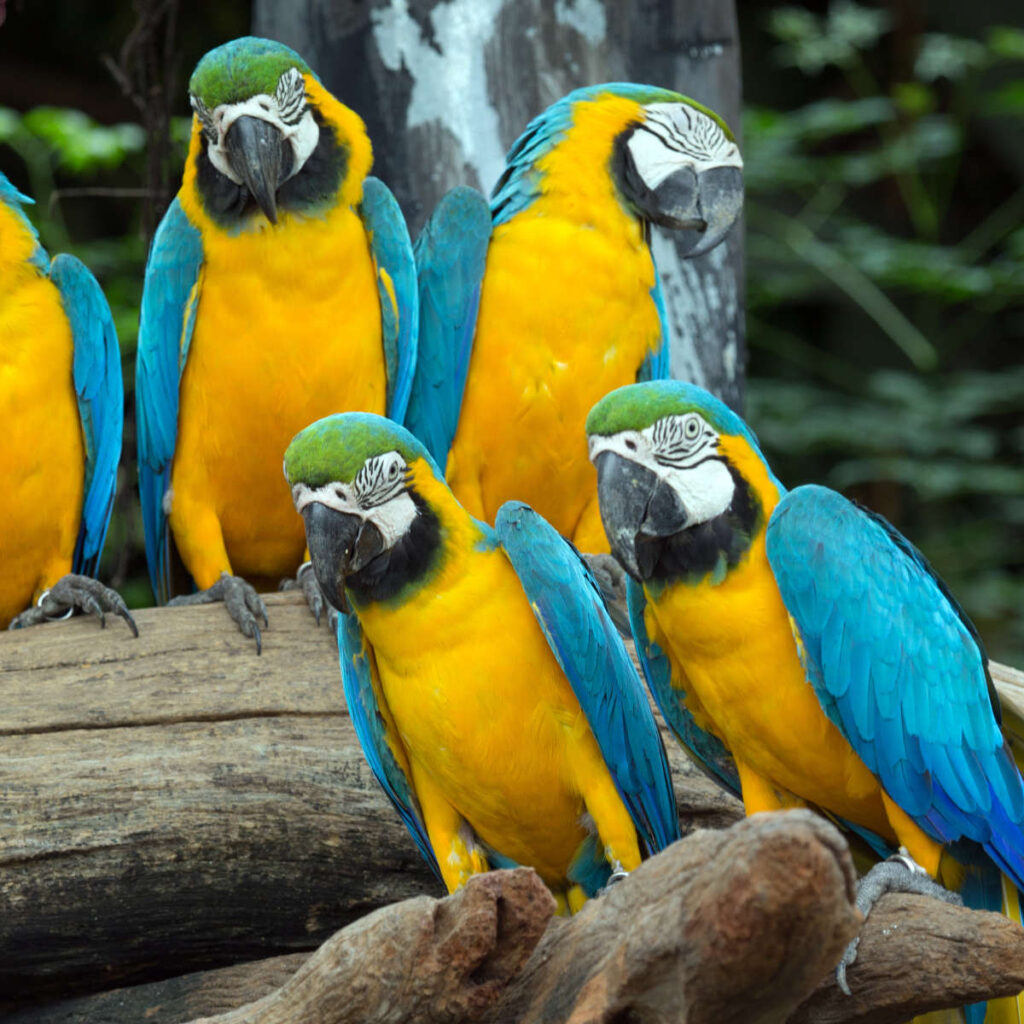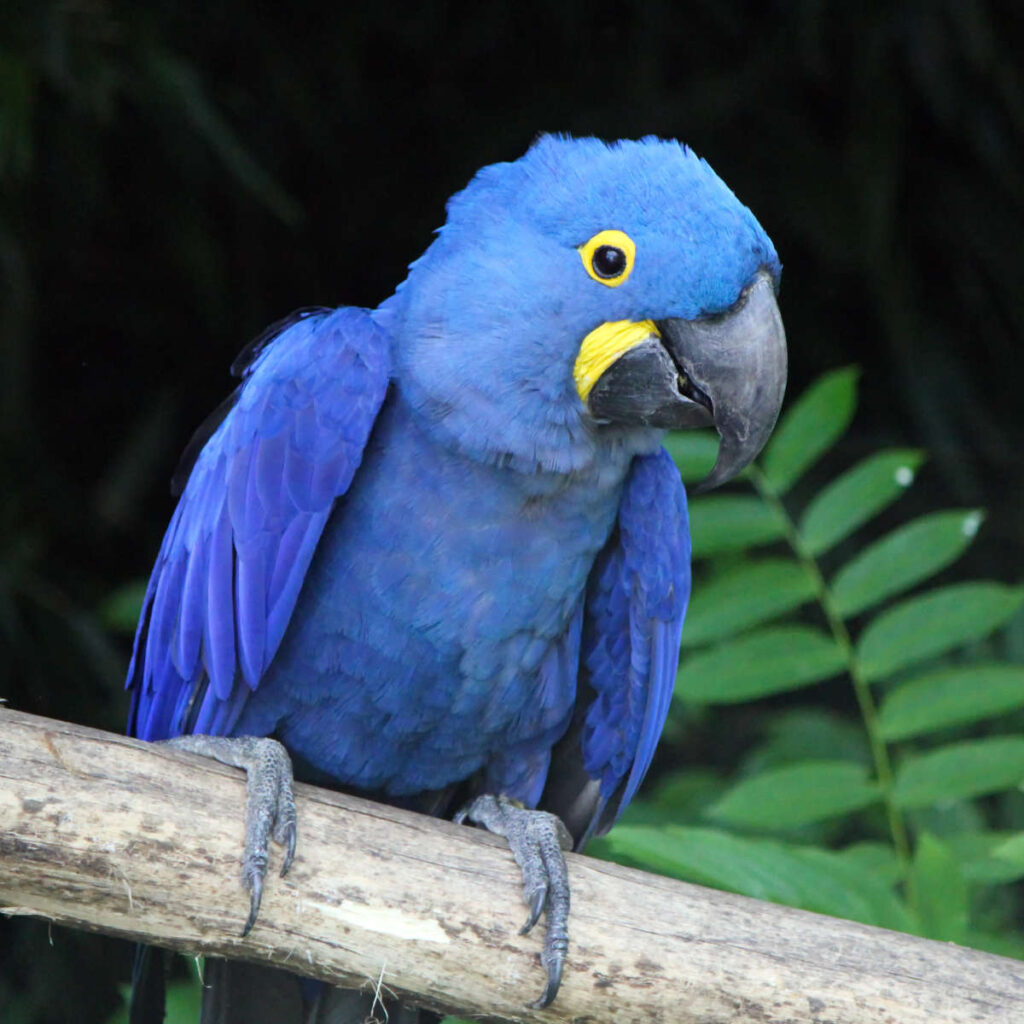Last Reviewed and Updated on November 2, 2022
Parrots are some of the most fascinating creatures on the planet. They’re beautiful, intelligent, and notoriously cheeky, but there’s so much more to them than what meets the eye! Read on to find out some of the most interesting facts about parrots.

1. There are about 400 species of parrots
There is much diversity in this group of birds; with about 400 different species of parrots, you will find them in all sizes and colors.
2. One-third of all parrot species are close to extinction
Sadly this is one of the facts about parrots we can’t be proud of. A third of all known parrot species are close to extinction, with many more nearing the threshold. The main threats to parrots are habitat loss, climate change, and even wildlife trade.
3. They are amongst the most intelligent birds
Corvids (ravens and crows) and parrots are considered to be the most intelligent birds, both showing high intelligence and great cognitive abilities. Their intelligence is on par with primates (even great apes).
4. A gray parrot Alex was able to identify objects and answer complex questions
Alex was a parrot that could identify many objects and answer questions made for six-year-olds. He could identify 50 different objects, recognize quantities up to six, and distinguish seven colors and five shapes. Alex could also understand concepts such as “bigger”, “smaller,” and “same” as well as quite a few others.
He had a vocabulary of over 100 words, but unlike most parrots, he appeared to understand what he said; for example, when he said “wanna banana”, he wanted a banana and wasn’t satisfied if he was given other food.
When he was asked questions in a research setting, he gave correct answers about 80% of the time. Alex certainly was one smart cookie.
If you want to learn more about Alex, do read the book “Alex & Me” by Irene Pepperberg, where she describes her experiences and her unique relationship with Alex.
5. Parrots don’t have vocal cords
What may come as a surprise, given their ability to talk, parrots don’t have vocal cords. Instead of pushing air through the vocal cords to make sounds as we do, parrots use their throat to push air through the syrinx, an organ in the trachea (windpipe), to make their vocalization.
6. They are the only species that display true tripedalism
Tripedalism means moving around with three limbs. Parrots are the only animals that display this type of movement as they use their beaks as a third foot when they are climbing.
7. Hyacinth macaw is the largest, and buff-faced pygmy parrot is the smallest parrot

The hyacinth macaw has the largest length of all parrots; from the top of its head to the tip of its tail, it measures about 3 ft 3 inches / 1 meter. It’s not the heaviest parrot, though, that title goes to flightless Kākāpō.
The world’s smallest known parrot is the buff-faced pygmy parrot which measures only 3.4 inch / 8.6 cm in length.
8. A macaw has a bite force close to that of a large dog
Macaws can deliver painful bites; on average, these birds have a bite force between 500 to 700 psi which is more than many dog breeds and close to that of a large dog.
The green-winged macaw can have a bite force of 2000 psi.
9. Similar to humans, parrots are usually either left-footed or right-footed
Most people are either right-handed or left-handed, with a small portion being ambidextrous. The same goes for parrots, they usually have one dominant leg.
10. With most species, if the pair can reproduce, they will be monogamous
Their main goal is reproduction, so as long as the couple is able to reproduce, they will stay together for the mating season and even beyond. As long as they can reproduce, they can form long-term monogamous pair bonds.
11. In most species, the male and female look the same
With most species, you can’t really tell the male and female apart just by looking at them.
Of all the parrot species, Eclectus parrots have the most differences between males and females, as males are emerald green and females are red and purple.
12. The bigger the parrot, the longer they usually live
The size of the parrot species is usually indicative of their lifespan.
13. The kākāpō Parrots can’t fly
Kākāpōs are pretty unique, these parrots aren’t able to fly – they are heavy, have relatively short wings, and lack the keel (extension of the breastbone) other birds have.
They use their wings to soften their fall when it leaps from trees and for maintaining balance.
14. A group of wild parrots lives in New York City
Generally, in the wild, you will find parrots in tropical and subtropical regions across the world. But a group of them has found its home in New York City.
The Quaker Parrots, native to Argentina, broke free from a shipment sometime between 1967 and 1968 and have since thrived in New York City.
15. Parrots are the only birds that can eat with their feet
This is one of the coolest facts about parrots. No other known bird species grabs food with their feet and brings it to their mouth.
